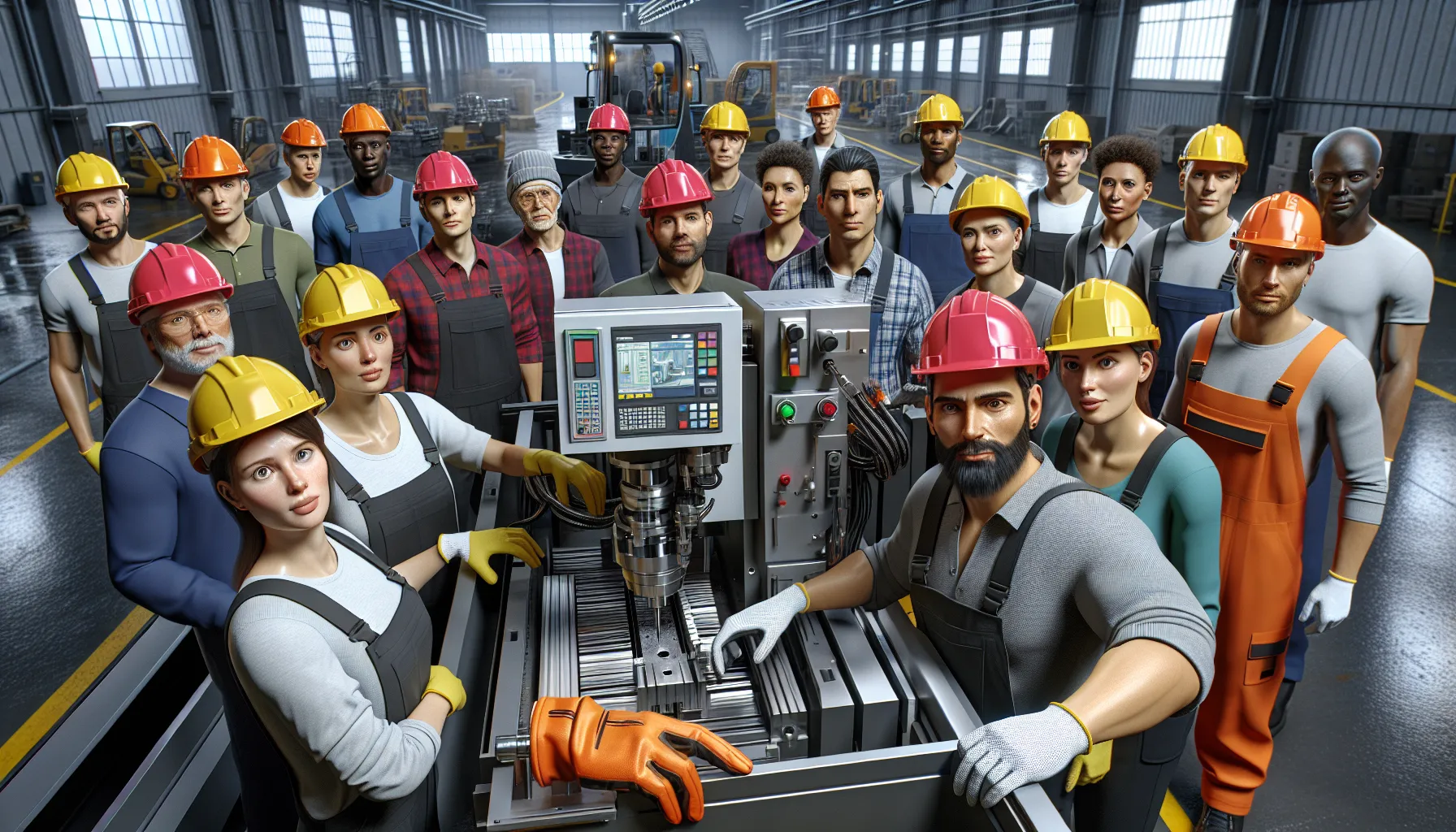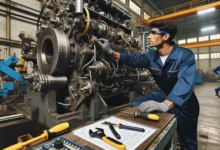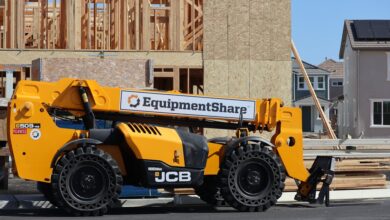Industrial Machinery Training: Boost Safety, Efficiency, and Compliance in Manufacturing
Advertisement
Every time I step onto a factory floor I notice how much depends on well-trained operators. Industrial machinery isn’t just powerful—it’s also complex and demands skillful hands and sharp minds. Without the right training even the best machines can become safety hazards or bottlenecks in production.
I’ve seen companies transform their efficiency and safety records simply by investing in proper machinery training. It’s not just about learning which buttons to press—it’s about understanding the whole system so every piece works smoothly together. For anyone working in manufacturing mastering industrial machinery is the first step toward a safer more productive workplace.
Understanding The Importance Of Industrial Machinery Training
- Lowering Accident Risks
I see fewer workplace injuries when operators get thorough machinery training. Training covers lockout/tagout procedures, machine guarding, and emergency stops, which helps everyone respond the right way during unexpected machine failures.
- Boosting Operational Efficiency
I notice that trained employees reduce downtime and defects on production lines. Training helps staff master machine setup, troubleshooting, and maintenance, letting them handle problems fast without waiting for outside help.
- Extending Equipment Lifespan
I find that regular, informed maintenance from trained operators prevents premature breakdowns. Well-trained workers check oil levels, swap out worn parts, and keep machinery clean, following manufacturer guidelines closely.
- Meeting Industry Standards
I make sure teams stay compliant with OSHA guidelines and local safety regulations through updated training sessions. Training prepares workers to handle audits, pass inspections, and document every maintenance task accurately.
- Increasing Workforce Confidence
I’ve seen confidence grow when people know how to operate industrial machinery right. Confident teams communicate better, solve daily challenges faster, and contribute to a safer, more productive environment.
- Supporting Company Growth
I’ve observed that skilled teams help companies scale operations and introduce new technology quickly. Ongoing industrial machinery training keeps everyone adaptable as new equipment emerges.
| Benefit | Impact Example | Result |
|---|---|---|
| Lowered Accident Risks | Lockout/tagout training | Fewer injuries, faster emergency response |
| Boosted Efficiency | Troubleshooting and setup skills | Less downtime, higher output |
| Extended Equipment Lifespan | Routine maintenance knowledge | Fewer breakdowns, lower replacement costs |
| Regulatory Compliance | OSHA and local safety procedure training | Successful audits, avoidance of fines |
| Increased Confidence | Mastery of machine operation | Teamwork, quick problem-solving |
| Support for Growth | Training for new machinery | Quicker adoption of technology, improved scalability |
Identifying Key Types Of Industrial Machinery Training

I recognize that effective industrial machinery training covers several core areas. Each training type serves a unique purpose, targeting specific skills needed to ensure safety, efficiency, and adaptability across modern industrial settings.
Safety And Compliance Training
I always prioritize safety and compliance training to reduce accidents and meet legal standards. Topics cover lockout/tagout protocols, personal protective equipment (PPE), emergency stops, and OSHA regulations. Real-world drills and periodic refreshers help me stay current and compliant with evolving laws.
Equipment Operation Training
I engage in equipment operation training to master the safe and efficient use of heavy machines. This involves hands-on practice with CNC machines, lathes, forklifts, or packaging lines, for example. Proper instruction lets me adjust settings, execute procedures, and troubleshoot basic operation issues confidently.
Maintenance And Troubleshooting Training
I take maintenance and troubleshooting training seriously to keep machinery in peak condition. Sessions include lubricating bearings, changing filters, detecting leaks, and interpreting machine error codes. When I’m proactive with preventive care, I minimize breakdowns and production stoppages.
Automation And Advanced Technology Training
I invest in automation and advanced technology training to leverage the latest industry tools. Training covers programmable logic controllers (PLCs), robotics arms, IoT sensors, and human-machine interfaces (HMIs). Learning these technologies lets me increase productivity and adapt quickly to new process innovations.
Selecting The Right Industrial Machinery Training Program
Selecting the most effective industrial machinery training program shapes long-term safety and productivity. I look for options that offer proven, job-focused learning tailored to real factory environments.
Evaluating Training Providers
I always evaluate training providers by examining their industry experience and reputation. Providers with at least five years of hands-on industrial expertise, for example, usually deliver programs that reflect current standards. I check for partnerships with recognized manufacturers or regulatory bodies, which indicate credibility. I also review feedback from other companies—positive outcomes and safety improvements in client case studies signal reliable training.
Assessing Curriculum And Certification Options
I analyze the curriculum to ensure it covers critical skills—like machine operation, safety protocols, and troubleshooting—using both classroom and practical modules. Providers offering nationally recognized certifications, such as OSHA 10/30-hour cards or NCCER credentials, show their training meets regulatory and industry benchmarks. I confirm training includes updates on recent technology and compliance standards, which keeps teams competitive and compliant.
Customizing Training For Specific Industries
I prioritize training that customizes content for industry-specific demands. Manufacturing, food processing, and chemical plants have unique machines and risks; specialized programs—like cleanroom procedures for electronics or sanitary practices for food—better prepare operators for their actual work setting. I ask about modular training or onsite instruction that adapts lessons to my company’s equipment and workflows, ensuring immediate, relevant skill transfer.
Implementing Effective Industrial Machinery Training Methods
When I develop an industrial machinery training program, I blend multiple formats to match real-world job demands and cater to different learning styles. Below, I’ve detailed three core training methods that consistently deliver strong results in manufacturing environments.
Hands-On Practical Sessions
I use hands-on practical sessions as the foundation of operator learning. During these, trainees operate industrial machinery under close supervision on the production floor. Activities include machine setup, performing safety checks, troubleshooting common errors, and conducting routine maintenance—such as lubricating bearings or inspecting conveyor belts. I insist that every trainee demonstrates correct use of personal protective equipment (PPE) and follows lockout/tagout protocols. Real scenarios, like clearing material jams or responding to simulated alarms, help reinforce best practices far better than lectures alone.
Classroom And Online Learning Modules
I combine traditional classroom settings with digital modules to ensure both theoretical and compliance training are thorough and accessible. In-person classes cover regulations like OSHA standards, risk assessments, and mechanical theory. I supplement these with online learning platforms that let operators study at their own pace, reviewing topics such as machine-specific operating manuals, emergency procedures, or updates in local standards. I find quizzes and interactive content, like animated safety walkthroughs and equipment diagrams, significantly boost retention.
Simulator-Based Training
I make simulator-based training a keystone for mastering complex machinery or high-risk tasks. These simulators can mimic CNC controls, welding processes, or robotic cell programming—allowing operators to build confidence and muscle memory without threat to actual equipment or safety. I track performance on these simulators using metrics like reaction time, accuracy, and adherence to best practices. Training teams on simulators before moving them to live equipment dramatically reduces operator errors and mechanical misuse on the shop floor.
Addressing Common Challenges In Industrial Machinery Training
Even the best training programs face obstacles that can slow progress or reduce effectiveness. I’ve found three key challenges that surface across most manufacturing sites.
Overcoming Language And Literacy Barriers
Many factory teams are diverse, and not everyone speaks or reads English fluently. I address this by using training materials in multiple languages and favoring visual aids, such as infographics and step-by-step diagrams, to explain safety rules or machine operations. I also use hands-on demonstrations and encourage group practice so every operator learns by doing, regardless of reading skills. When possible, I partner with bilingual trainers or provide glossaries of technical terms.
Keeping Up With Technological Advancements
Machinery evolves fast—automation systems, IoT sensors, and digital controls are now standard on many shop floors. I update training content regularly and include new modules whenever factories upgrade equipment. I organize vendor-led workshops and job-shadowing sessions to help employees adapt quickly to newer technologies, ensuring they’re comfortable with system updates and troubleshooting procedures.
Ensuring Ongoing Skill Development
Training isn’t a one-time event—I see better long-term results with refresher courses and advanced workshops every six or twelve months. I set up peer mentoring so senior operators coach newcomers, which strengthens teamwork and keeps knowledge flowing. I also track operator competencies and offer incentives for upskilling, motivating teams to stay sharp as machinery or standards change.
Measuring The Impact Of Industrial Machinery Training On Workplace Performance
1. Tracking Key Performance Indicators (KPIs)
I always measure training outcomes with core KPIs, connecting operator skills to workplace performance. Metrics like machine downtime, incident rates, cycle time, reject rates, and productivity per shift give me clear before-and-after views. For example, tracking accident frequency and machine breakdowns shows real safety gains after training.
2. Conducting Pre- and Post-Training Assessments
I use skills assessments and validation tests before and after training sessions to identify knowledge gaps and improvement. Written tests, hands-on machine demonstrations, and safety quizzes provide data. These results highlight measurable progress in operator competency and safety awareness.
3. Monitoring Operational Metrics
I rely on production data to spot real productivity improvements tied to training interventions. Reduced equipment failure, shorter start-up times, and decreased production waste are indicators I look for weekly. These shifts prove that updated operator training directly supports plant performance.
4. Analyzing Safety Records
I review workplace accident logs and near-miss reports to measure safety training effectiveness. Fewer injuries, improved lockout/tagout compliance, or a drop in OSHA recordables after training lead me to validate training methods and content choices.
5. Gathering Employee Feedback
I collect frontline feedback with surveys and informal interviews to gauge training relevance and identify ongoing skill gaps. When operators report higher confidence or share new process improvements, I know the training is creating a real impact on day-to-day performance.
6. Evaluating Maintenance Costs and Equipment Longevity
I compare repair expenses and maintenance schedules before and after machinery training. Most times, I see longer equipment lifespans, fewer urgent fixes, and better preventive maintenance, all linked to better-trained staff.
| Metric | Pre-Training Example | Post-Training Example |
|---|---|---|
| Machine Downtime (hrs/month) | 15 | 9 |
| Accident Rate (incidents/yr) | 6 | 2 |
| Defect Rate (%) | 3.5 | 1.1 |
| Productivity (units/hr) | 42 | 56 |
| Maintenance Cost ($/quarter) | 18,000 | 12,000 |
Conclusion
Industrial machinery training isn’t just about ticking off a compliance checklist—it’s about building a reliable and agile workforce ready to handle the demands of modern manufacturing. I’ve seen firsthand how investing in comprehensive training transforms not only safety records but also team morale and operational performance.
By prioritizing skill development and staying proactive with evolving technologies, companies can future-proof their operations. When every operator is equipped with the right knowledge and confidence, the entire organization benefits—creating a safer, more efficient, and ultimately more successful workplace.
Frequently Asked Questions
Why is industrial machinery training important?
Industrial machinery training is essential for reducing workplace accidents, improving operational efficiency, and ensuring equipment longevity. Well-trained operators can handle complex machinery safely, troubleshoot issues, and perform routine maintenance, resulting in fewer errors and reduced downtime.
How does machinery training improve workplace safety?
Machinery training educates operators on critical safety procedures such as lockout/tagout, machine guarding, and emergency stops. This knowledge significantly lowers the risk of workplace accidents and injuries by ensuring operators understand and follow proper safety protocols.
What key areas should industrial machinery training cover?
Effective machinery training should cover safety and compliance, equipment operation, maintenance and troubleshooting, and the use of automation or advanced technology. A well-rounded program ensures operators are prepared for all aspects of their job.
How can companies choose the right industrial machinery training program?
Companies should look for training providers with industry experience, reputable partnerships, and comprehensive curriculums that include critical skills and certifications. Programs should also be tailored to the specific needs and regulations of the industry.
What training methods are most effective for industrial machinery?
A mix of hands-on practical sessions, classroom or online learning, and simulator-based training is most effective. This approach allows operators to apply theoretical knowledge in real-world situations and safely practice complex tasks.
How can training adapt to language and literacy barriers?
Using multilingual materials, visual aids, and hands-on demonstrations helps overcome language and literacy barriers. Customizing training delivery ensures all operators understand essential concepts regardless of their primary language.
How do companies keep training relevant with advancing technology?
Training content should be regularly updated to include new technologies and processes. Partnering with equipment vendors and organizing workshops helps operators stay current with industry advancements.
Why is ongoing skill development necessary for operators?
Ongoing skill development through refresher courses, mentoring, and competency tracking ensures that operators maintain and improve their skills, adapt to new machinery, and keep up with evolving safety standards.
How can the effectiveness of industrial machinery training be measured?
Effectiveness is measured by tracking KPIs such as machine downtime, incident rates, productivity, and reject rates. Pre- and post-training assessments, employee feedback, and safety records also help evaluate training impact.
What are the benefits of investing in comprehensive machinery training?
Benefits include improved safety, higher productivity, reduced maintenance costs, lower downtime, and increased equipment lifespan. Skilled teams also support faster adoption of new technology and scalable business growth.









